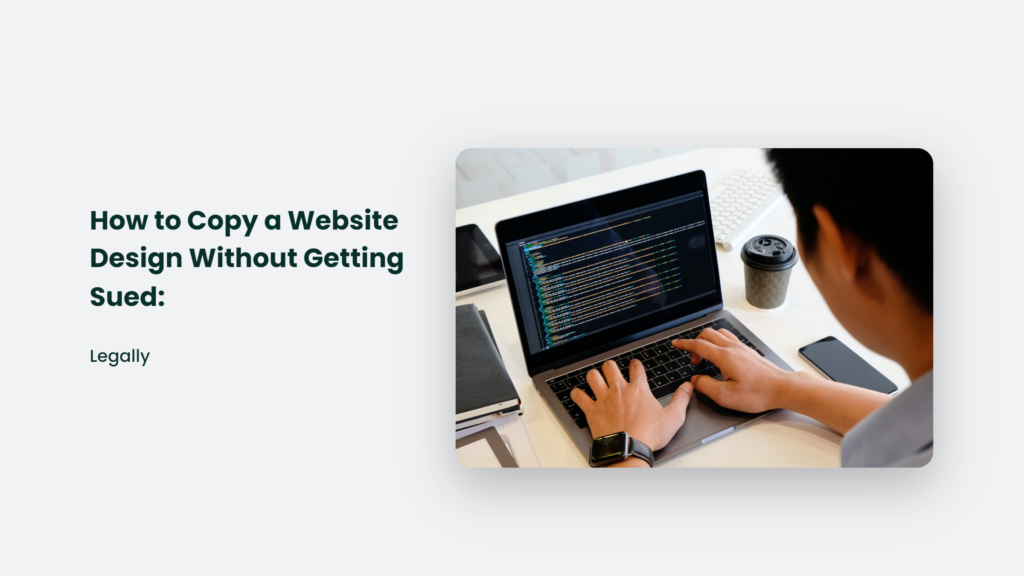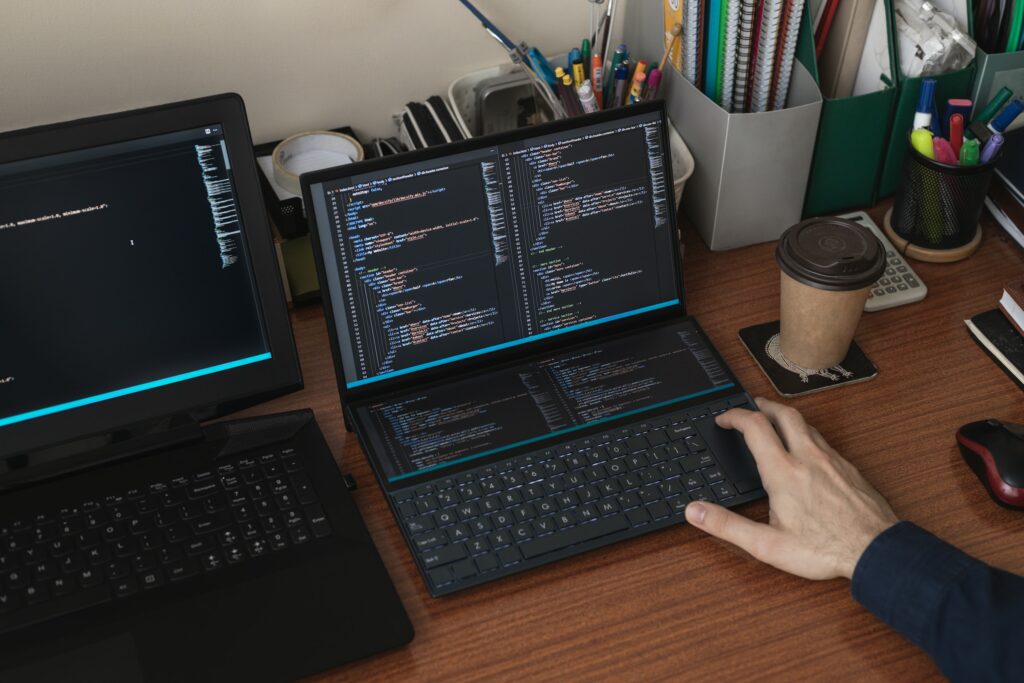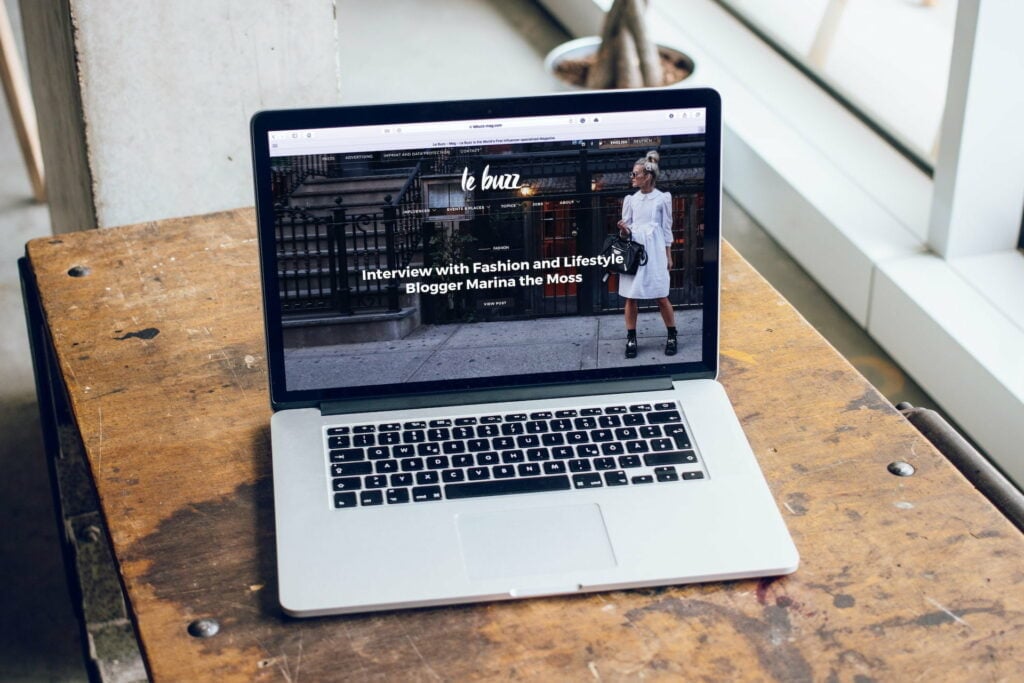Have you ever stumbled upon a random website and thought, “Damn, I wish I could make something that nice.” I know I have. More times than I can count.
But then that little voice in your head pipes up, “But wait, you can’t just steal someone else’s design, can you?” Valid question. And the short answer is: no, you can’t just straight-up jack someone’s website design. That’s called plagiarism. And it’s illegal.
But here’s the good news: there are a few ways you can legally “copy” parts of an existing website design to use as inspiration or a template for your website. You just have to be smart about it.
In this post, I will walk you through the right and wrong ways on how to copy a website design so you can make something you love without ending up in an orange jumpsuit.

How NOT to Copy a Website Design
First, let’s get the big no-no’s out of the way. Here are a few ways you should absolutely NOT copy someone else’s website:
- Downloading the full site files. Don’t just save all the images, CSS, JavaScript, etc. That’s stealing.
- Copying all the code. Swiping all the HTML and CSS is also a no-go.
- Stealing written content. Never copy paragraphs of text or blog posts. That’s plagiarism.
- Using trademarked names/logos. For example, don’t make your own Facebook or Coke website.
- Making a replica. Your site should have your unique flair.
You want to avoid anything violating copyright law or intellectual property rights. Those things will land you in legal hot water faster than Alex Honnold free-soloing El Capitan. Not worth it.
2 Legal Ways on How to Copy a Website Design:
Now that we’ve gotten that out of the way, here are a couple of perfectly legal ways to copy parts of an existing website design:
Use website copying tools ethically.
Several tools, like HTTrack, allow you to easily clone an entire website with the click of a button.
It can be an incredible learning resource because it lets you poke around in the code and see how everything fits together. But make sure you only use it for educational purposes on your local machine.
Once you’re done exploring, delete the copied files. Don’t publish them online as your site.
Copy small style elements.
As a developer, I often reference sites I like for design inspiration. For example, I may copy a clever button style or a slick hover animation.
Small styling details like these are generally fine to replicate (though I’d still put your spin on them).
Just make sure you don’t copy huge chunks of layout or code. Use these style snippets as inspiration to create your unique website.
How Much Can You Legally Copy?
Regarding copyright law, there aren’t always hard and fast rules. But here are a few good guidelines on how much you can safely copy:
- Short code snippets (e.g. a few lines of CSS) are generally fine.
- Copying an entire page layout crosses the line. Add your flair.
- Unique branding elements (logos, names, taglines) are off-limits.
- Written content should always be original. Don’t copy paragraphs of text.
The key is that your site should have a distinct look and feel. It shouldn’t be an exact clone of another site. Steal ideas, not actual assets.
What If You Accidentally Copy?
Let’s say you publish your new site and then realize it looks too much like another site you referenced. Yikes. What should you do?
First, don’t panic. Immediately take your site down and revise the parts that are too similar. You’re probably fine if it’s just a small styling detail or two.
But you may need a complete redesign if you somehow copied huge chunks of content or layout. Better to be safe than get sued.
How to Ethically Get Inspiration
Copying other designs is riding a fine line. A better approach is to use sites you like as inspiration, not templates.
Here are a few tips:
- Study designs you admire and note what you like about them.
- Compile a mood board of styles and elements you want to incorporate.
- Sketch your layouts inspired by various sites – wait to copy one exactly.
- Implement the visual ideas in your unique way.
Doing it this way ensures your site will be distinctly your own. You get the best of both worlds: inspiration from designs you love and a creative design you can call your own.
Frequently Asked Questions:
How can I avoid copyright infringement?
– Never copy chunks of code or CSS directly from other websites
– Always check licensing and get permission before using images, videos, text content, etc.
– Hire designers to create original graphics and assets for your site
– Only use code snippets found on sites that expressly permit it
– Don’t copy site layouts or designs outright – take inspiration, but design your own unique look and feel
What are some examples of trademarks I can’t use?
Some examples include:
– Brand names like Coca-Cola, McDonald’s, etc.
– Sports team names and logos
– Car company logos and branding
– Disney characters and assets
– Famous pop culture characters and franchises
Basically, any name, logo, or branding owned by another company or entity is off-limits. Do not use trademarked assets without explicit permission.
In Closing
Copying a website design can get you into legal trouble if you aren’t careful. But it is possible to legally reference and get inspiration from existing sites if you follow a few guidelines:
- Never copy code, content, or branding elements outright
- Use small snippets of code/style ethically
- Make sure your overall site has a unique look and feel
- Take inspiration from multiple sources
Learning from other great designs is smart. Outright stealing them is dumb.
So go forth and seek inspiration from the best web designs out there. Just be sure to make it your own. Add your secret sauce and create something awesome that won’t land you in the slammer.
You got this.




